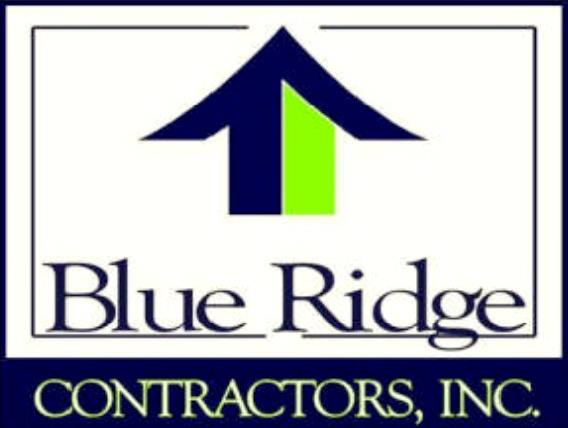Residential Roof Options
This information was found on a great article reflecting the different types of roofing options by Joe Cuhaj titled "How to choose a roof for your home" and can be found by clicking this link along with other useful information.
From natural materials like slate and wood to manmade products such as asphalt, sheet metal, and plastic polymers; there are more types and styles of roofing to choose from today than ever before. While each has its advantages and shortcomings, they all can add a distinctive design element to your home. So which one is right for you?
What to Look for in a Roof
There are many factors to consider when selecting a roof including:
How long will it last?
Does it hold up during natural disasters such as hail storms, wind, or wildfires?
Is it too heavy for the existing roof framing?
Does the roof have enough slope?
Will the look complement the style of the house?
Is the type of roofing allowed by local building codes?
And finally, how much does it cost?
Pros and Cons
Some types of roofing may be better suited for your house than others. Factors such as the slope of the roof and strength of the framing could limit your choices. In areas prone to wildfires or hail/wind storms, look for a product with a high fire rating or good wind resistance. In addition, steps can be taken during the installation of many types of roofing to improve their resistance to fire or wind. Below is a rundown on the different types of roofing available.
Asphalt shingles
Asphalt shingles are the most popular type of roofing for homes, comprising over 80% of residential roofing market.
Materials: Made of either an organic paper fiber mat (better for cold weather and wind resistance) or fiberglass (more fire and moisture resistant) impregnated with asphalt and coated with mineral granules.
Appearance: Available in traditional 3-tab shingles or thicker laminated “architectural” shingles.
Eco-Friendly: Petroleum based product that’s not eco-friendly. Can be recycled, though often taken to landfills.
Durability: Not very durable. Algae resistant shingles are available in humid climates to prevent staining.
Weight: Moderate in weight.
Slope: Can be used on fairly low to steeper sloped roofs.
Fire & Wind: Good fire resistance, fair wind resistance.
Cost: Inexpensive to moderate.
Metal Roofing
While more expensive than asphalt, metal roofing lasts longer and is more wind resistant.
Materials: May be composed of steel, aluminum, copper, or zinc alloy. Steel roofs come with either a zinc coating or painted finish. Copper roofs are installed unfinished and acquire a protective green patina with age.
Appearance: Available in sheets or in shingles that resemble other materials. Can be installed with the fasteners hidden (standing seam) or exposed.
Eco-Friendly: May be made from recycled materials and can be recycled when replaced. Absorb a third less heat than asphalt.
Durability: Fairly to very durable, depending on the material.
Weight: Lightweight.
Slope: Available for low or steep sloped roofs.
Fire & Wind: Good resistance to both fire and wind.
Cost: Moderate (steel) to expensive (copper).
Plastic Polymer
These durable synthetic roofing shingles resemble either wood shakes or slate.
Materials: Molded from a high-tech plastic polymer material.
Appearance: Made to resemble slate or wood shakes.
Durability: Claimed to be long lasting and low maintenance.
Eco-Friendly: Some are made from recycled materials. Can be recycled when replaced.
Weight: Light to moderate in weight.
Slope: Can be used on moderate to steep sloped roofs.
Fire & Wind: Good fire and wind resistance.
Cost: Moderate.
Clay Tile
While brittle and heavy, clay tiles can last a long time and are very fire resistant.
Materials: Made from natural clay which is fired in a kiln.
Appearance: Traditional Italian or Spanish look, can also be made to resemble wood shakes or slate.
Eco-Friendly: Made from natural materials but requires significant energy to manufacture.
Durability: Long lasting and low maintenance but brittle and can break.
Weight: Heavy, require reinforced roof framing to support.
Slope: Can be used on moderate to steeper sloped roofs.
Fire & Wind: Excellent fire resistance, fair to low wind resistance.
Cost: Expensive.
Concrete tile
Less expensive than clay tiles, concrete roof tiles are also heavy but can last a long time and are very fire resistant.
Materials: Made from a mixture of Portland cement and sand.
Appearance: Can be made to resemble traditional clay tiles, wood shakes, or slate. Color can be throughout tile or only applied on the surface.
Eco-Friendly: Made from natural materials but requires significant energy to manufacture.
Durability: Long lasting and low maintenance but can break.
Weight: Heavy, require reinforced roof framing to support.
Slope: Can be used on moderate to steeper sloped roofs.
Fire & Wind: Excellent fire resistance, fair to low wind resistance.
Cost: Moderate.
Slate Tile
Slate is one of the oldest roofing materials. Though brittle and expensive, it is very durable and resists both wind and fire.
Materials: Made from natural slate rock.
Appearance: Usually dark gray with irregular appearance.
Eco-Friendly: Made from natural materials.
Durability: Long lasting, durable (depending on where quarried).
Weight: Heavy, require reinforced roofing structure to support.
Slope: Steep sloped roofs only.
Fire & Wind: Good fire and wind resistance.
Cost: Very expensive. Requires specially trained workers to install.
Wood Shingles and Shakes
Wood shingles and shakes made from rot resistant woods have low fire resistance unless treated.
Materials: Commonly made of cedar, but can also be made of other rot resistant woods, such as redwood.
Appearance: Gives natural look, weathers to a silvery gray. Available in sawn shingles or thicker split shakes.
Eco-Friendly: Made from natural materials.
Durability: Short lifespan and requires periodic maintenance.
Weight: Moderate in weight.
Slope: Can be used on moderate to steep sloped roofs.
Fire & Wind: Good wind resistance, poor fire resistance (can be treated with a fire retardant).
Cost: Moderate.

